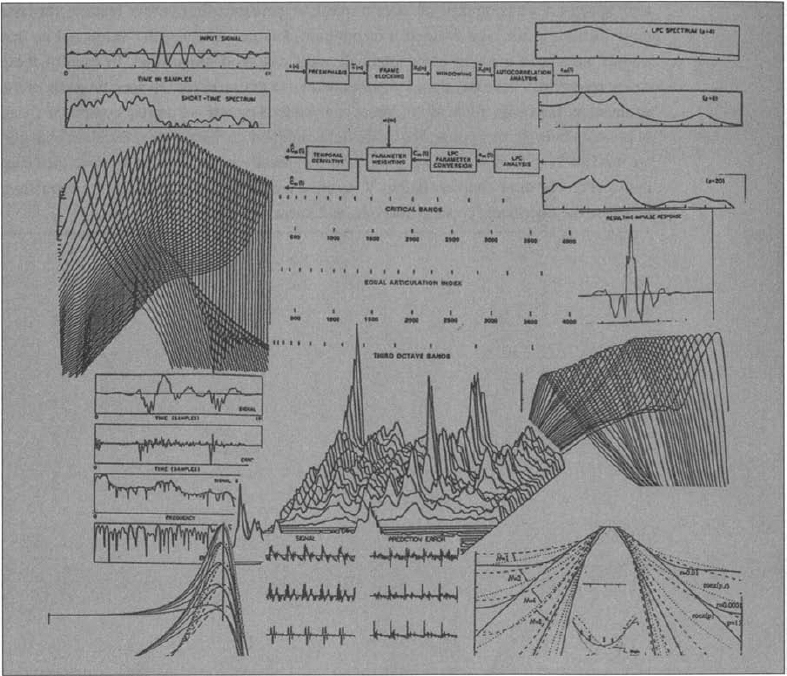PART V
![]()
SPEECH FEATURES

My sources are unreliable, but their information is fascinating.
–Ashleigh Brilliant
BEGINNING WITH Part V, we illustrate how signal processing and pattern-recognition techniques can be applied to problems in speech and audio. In Parts V–VIII we will incorporate the ideas hinted at in Part I, using the mathematics from Part II, assuming the underlying structure of the signal suggested in Part III, and with a perspective derived from our view of human hearing as described in Part IV.
In every speech-processing system, signal processing is used to extract relevant features. In the case of analysis for synthesis, for instance, representations of the short-term spectrum are computed in order to preserve perceptually relevant features for later reproduction. In the case of speech recognition, features are typically computed so that sounds associated with different linguistic units can be distinguished. In each of these cases, researchers have developed representations to optimize for the specific goals of the application. However, much as the colors in a painter's palette are used to compose a range of possible hues, basic approaches to the representation of short-term spectral information are used as components in more complex types of feature extraction that ...
Get Speech and Audio Signal Processing: Processing and Perception of Speech and Music, Second Edition now with the O’Reilly learning platform.
O’Reilly members experience books, live events, courses curated by job role, and more from O’Reilly and nearly 200 top publishers.

